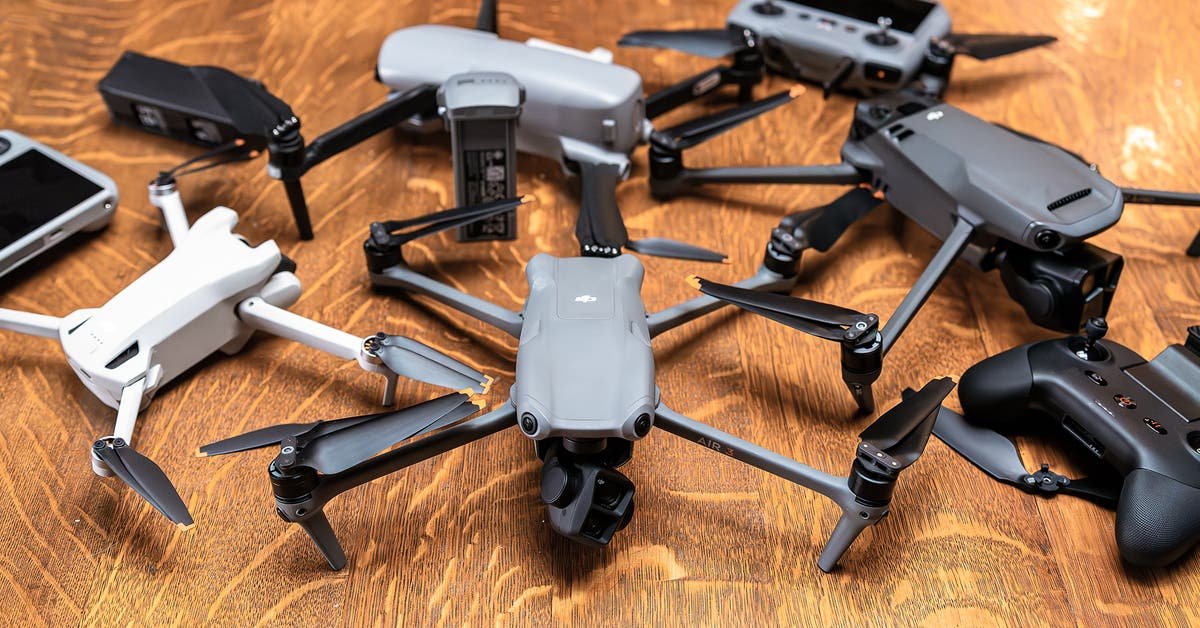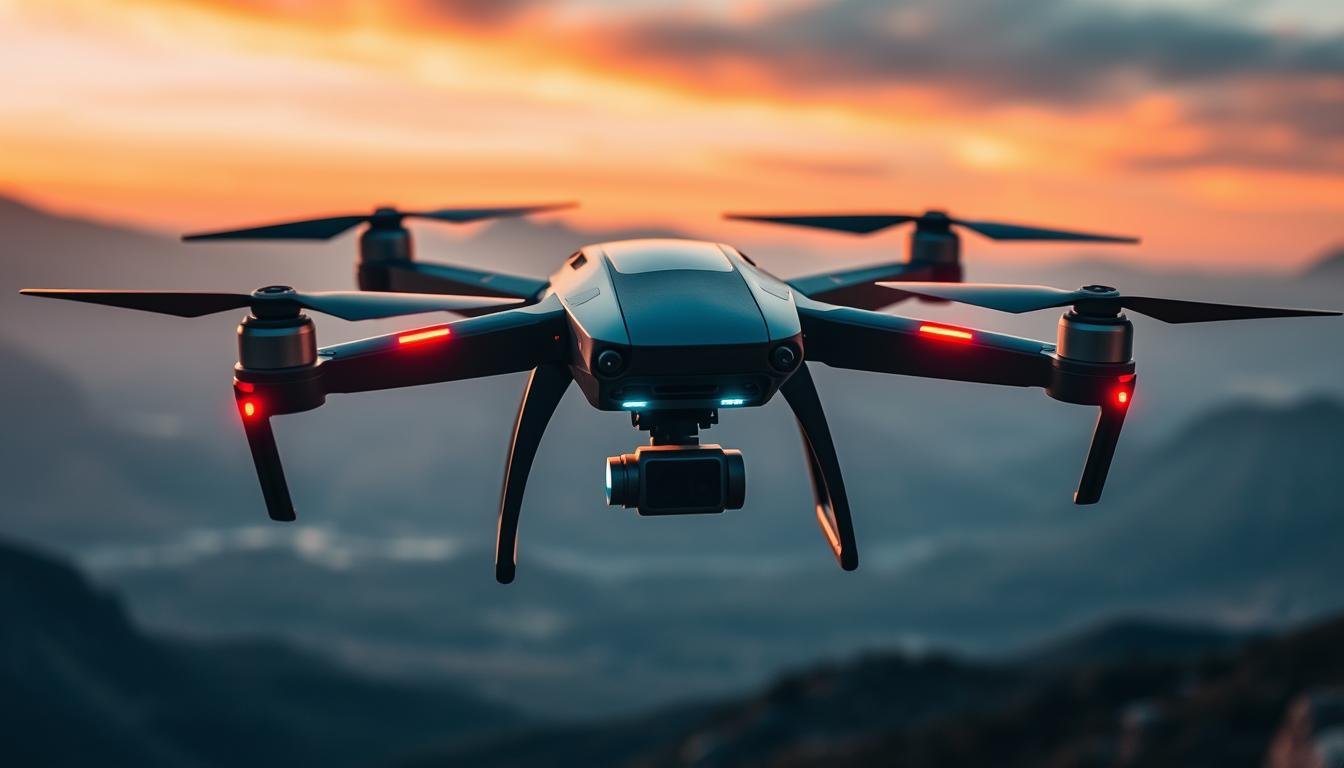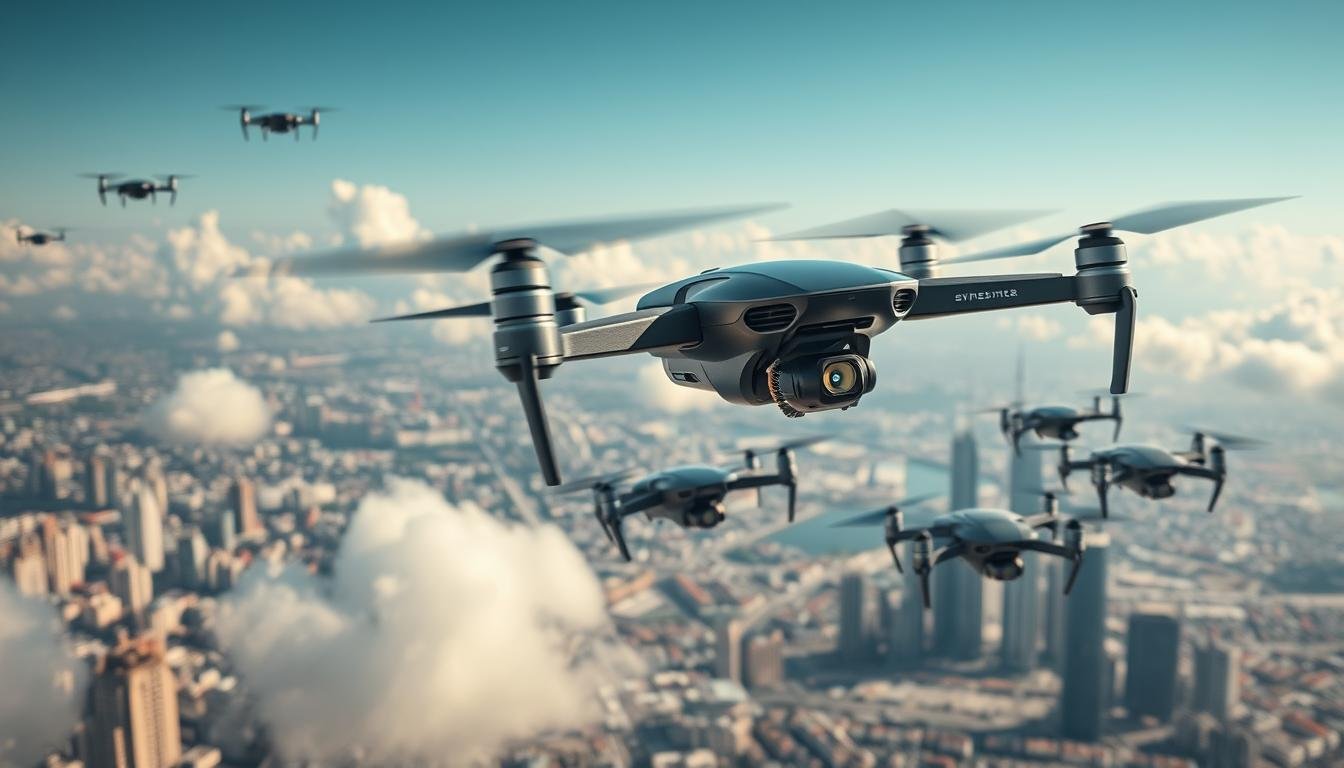I consider the threat posed by renegade drones as I gaze out the window. They can be found everywhere, and some people utilize them maliciously or for amusement. To halt them, we need efficient methods. This raises a crucial query: Does Copper Paper Block Drone Jammers? Let’s investigate how copper paper might be able to prevent drone jammers and offer a dependable way to prevent illegal drone use in order to obtain the best response to this question.
Key Takeaways
- Copper paper can block drone jammers by making a Faraday cage. This cage stops electromagnetic interference.
- Drone defense systems using high-power microwaves (HPM) might be a good answer. They can fight off drones and beat old jammer problems.
- It’s important to know how drones can be hurt by HPM. This helps us make better ways to stop drones.
- We must think about laws and rules when we use anti-drone tech. This makes sure we follow the rules and use it right.
- New trends in HPM tech might lead to small, easy-to-carry drone defense tools. This could mean we can defend against drones anytime, anywhere.
Introduction to Drone Security Threats
The drone industry is growing fast, which raises big security worries. The U.S. Federal Aviation Administration (FAA) says drone sales will more than double to 7 million soon. This means more chances for bad people to use drones for harm.
There have been real drone attacks and incidents. These show how serious the problem is with rogue drones.
Real-life Examples of Drone Attacks and Incidents
Groups like extremists, drug dealers, and organized criminals use drones for bad things. They use drones to send drugs to prisons, spy, and even try to kill people. For example, in January 2023, the Civil Aviation Authority (CAA) said 500,000 drone users were registered. They handle 7,000 drone permits every year.
This shows we need to stop drones from being misused.
Consequences of Rogue Drones Used by Extremists and Criminals
Drone misuse can lead to many problems. These include taking pictures or videos, carrying illegal items, collecting data for harm, and disrupting events. These issues worry us about keeping places like nuclear facilities safe.
Drone detection and stopping systems are key. They help us know when a drone is coming, where it’s from, and who’s flying it.
| Year | UK Drone Sightings Near Nuclear Facilities | USA Drone Incursions Reported at Nuclear Facilities |
|---|---|---|
| 2021 | 10 | N/A |
| 2022 | 9 | N/A |
| 2023 (up to August) | 6 | N/A |
| 2015-2019 | N/A | 57 |
“The rapid growth of the drone industry has brought about significant security concerns, with the potential for misuse by criminals and extremists becoming a pressing issue.”
Current Anti-Drone Technologies and Their Limitations
As rogue drones become a bigger threat, new anti-drone tech has come out. But, these solutions often can’t keep up with drone tech getting smarter. We’ll look at what’s wrong with two common anti-drone methods: RF jammers and laser systems.
Radio Frequency Jammers and Their Inability to Stop Autonomous Drones
RF jammers block the link between a drone and its controller. But, they don’t work well against drones that fly on their own. As drones get smarter, RF jammers find it hard to stop them.
Drawbacks of Laser-Based Anti-Drone Systems
Laser systems aim to take down rogue drones with high-energy beams. But, they have big problems in real life. Weather like fog or rain can mess up their aim. Plus, there’s a big risk of damage to things nearby.
Drone tech is getting better, making old anti-drone methods less useful. We need new, better ways to fight drones fast.
“The commercial UAS fleet is predicted to reach around 828,000 by 2024, with an additional 1.48 million drones for recreational use in the sky.”
This shows we really need better anti-drone tech to keep our skies safe.
The Principles of High-Power Microwaves (HPM) for Drone Defense
High-Power Microwaves (HPM) are a new way to defend against drones. They use electromagnetic energy to mess with drone electronics. This energy can make drones lose control or even break them.
HPM systems create a strong electromagnetic field. This field can make drones’ electronics go wrong. It can upset or damage them.
The main ideas behind HPM for drone defense are:
- Creating strong microwave pulses to get through drones’ electronics.
- Going after drones’ important parts like flight controllers and GPS.
- Stopping these parts from working right, making drones lose control or fail.
HPM systems make a big burst of electromagnetic energy. This energy can make drones’ electronics go haywire. It can mess up their systems or even break them.
“HPM systems provide a unique capability to counter the growing threat of rogue drones used for criminal or terrorist activities.”
HPM is different from old ways like radio frequency (RF) jammers. It can stop drones that don’t need constant signals. This makes HPM a great tool for anti-drone defense.
HPM for drone defense is getting better all the time. Scientists and developers are working hard to make it better. As drones become a bigger problem, HPM is key for keeping us safe.
does copper paper block drone jammers
In the world of drones, keeping things safe is key. Copper paper is a new way to block drone jammers. It makes a safe space for important areas from drone spying and trouble.
Understanding the Effectiveness of Copper Faraday Cages
Copper is great at blocking signals. It makes Faraday cages that stop drone control signals. These cages block electromagnetic fields, stopping signals that could control or mess with drones.
By making a shielded area, copper Faraday cages keep places safe. They stop drone jammers from being a problem.
Practical Applications of Copper Paper for Drone Signal Blocking
Copper paper is good for many uses in drone safety. It blocks drone jammers and makes shields that are easy to carry. This helps keep areas or devices safe from drone spying.
Also, copper faraday cage effectiveness in stopping drone signals is a smart and cheap way to get safer. Using copper paper for drone signal blocking makes a safe wall. It stops bad drones from causing trouble.
“The use of copper paper for drone signal blocking is a game-changer in the fight against unauthorized drone activity. Its ability to create a shielded environment that effectively neutralizes the threat of drone jammers is a testament to the power of innovative security solutions.”
The drone world is always changing, and we need better security. Using copper paper blocking drone jammers and copper faraday cage effectiveness shows how good this tech is. It keeps us safe from drone problems and illegal stuff.
Evaluating the Performance of HPM Systems
HPM systems are key in defending against drones. Their success depends on power, frequency, and pulse characteristics. Knowing how these factors work is key to understanding HPM’s role in drone defense.
Impact of Power Levels, Frequency, and Pulse Characteristics
Higher power in HPM systems can really hurt drones. It sends strong microwave energy that can mess up drones’ electronics. This can make drones stop working or even break them.
HPM’s frequency and pulse length can be set to hit drones’ weak spots. Some frequencies might mess up drones’ flight controls. Short pulses can target cameras, sensors, or communication systems.
| HPM Parameter | Impact on Drone Performance |
|---|---|
| Power Levels | Higher power increases disruption and potential damage to drone electronics |
| Frequency | Specific frequency ranges can target vulnerable drone components more effectively |
| Pulse Characteristics | Short, high-energy pulses can precisely disable critical drone systems |
HPM systems can be fine-tuned to take down different drones. This includes small ones and big, smart drones.
“The Counter-drone technology like jammers, net-guns, trained eagles, and laser systems are being used to disable malicious drones, but the existing technology struggles with controlling and neutralizing autonomous pilot drones.”
HPM systems are vital in fighting rogue drones. They use microwave energy’s power, frequency, and pulse to protect us. This is important for keeping places safe from drones.
Electronic Components Vulnerable to HPM Radiation
Drones can be hurt by High-Power Microwave (HPM) radiation. This kind of electromagnetic weapon can damage drone parts like sensors, communications, and power systems. Knowing what parts are most at risk helps us fight against drones used by bad people.
Upset and Damage Thresholds for Drone Electronics
The Air Force Research Laboratory (AFRL) has looked into how HPM radiation affects electronics. They found it can cause problems from minor issues to serious damage. The harm depends on the drone’s design and parts.
- Sensors like cameras and GPS can get messed up or broken by HPM. This makes it hard for drones to know where they are and where to go.
- Communication systems can also be disrupted. This means drones might lose contact with their operators or ground stations.
- Avionics, which control the drone’s flight, can be affected. This might make the drone fly erratically or lose control.
- Power and propulsion systems, like motors and batteries, can also be damaged. This can cause drones to lose power or crash.
Knowing these weaknesses helps us create better ways to stop drones used by bad people like extremists and criminals.
“The cost-per-shot of high power microwave systems is relatively low compared to development costs, making them a more practical solution for countering illegal drone activities.”
Miniaturization and Mobility of HPM Systems
High-power microwave (HPM) technology has seen big changes. Now, HPM weapons are smaller and more mobile. This makes them easier to use in many places for drone defense.
Scientists and makers are working hard to make HPM systems smaller and lighter. They want to keep them powerful. This way, HPM systems can be used in more situations and places.
Recently, we’ve seen big steps forward in making HPM systems smaller. This is important because drones are becoming more common in military use. By 2025, drones will likely play a big role in military actions.
HPM weapons are a big problem for drones. They can be used for both attacking and defending. Drones are getting better, like the DJI Phantom IV, which can fly higher than expected.
The miniaturization of HPM systems and the creation of mobile HPM drone defense are key. They help fight the growing threat of portable HPM weapons. With these advancements, defense forces can tackle more drone threats. This keeps important places and military operations safe.
“The capabilities of UAS are evolving rapidly, with systems like the DJI Phantom IV quadcopter capable of exceeding the altitude expectations of their classified UAS groups.”
Legal and Regulatory Considerations
Using anti-drone tech, like high-power microwave (HPM) systems, has many legal and regulatory hurdles. As drone threats grow, lawmakers and officials are trying to create strong rules for these countermeasures.
HPM systems can harm not just drones but also other electronic devices nearby. This could affect people who aren’t even involved. It’s important to have strict safety rules and approval processes to avoid these problems.
Existing Laws and Regulations Surrounding Anti-Drone Measures
The rules for anti-drone tech vary by place. In the U.S., the Federal Aviation Administration (FAA) has rules for testing and using these systems. They focus on keeping air travel safe and protecting important places.
- The FAA’s Counter-UAS (C-UAS) Capability Evaluation and Testing Program helps check if these systems are safe and work well.
- The Department of Homeland Security has guidelines on Use of Counter-Unmanned Aircraft Systems (C-UAS) Technology. This helps agencies understand the legal side of things.
- Worldwide, the Article 36 of the Additional Protocol I to the Geneva Conventions (1949) makes states check if new weapons, like HPM systems, are legal.
It’s key to understand these laws well for using HPM-based drone defense systems right. Governments, military, law enforcement, and private companies need to work together. They must find a way to keep everyone safe while also protecting freedom.
Emerging Trends and Future Developments
High-power microwave (HPM) technology for drone defense is changing fast. Researchers are working hard to make these systems better. New trends and advancements in HPM technology and anti-drone defense are changing the security world.
Advancements in HPM Technology and Anti-Drone Defense
Improving HPM power, precision, and mobility is a big focus. Scientists aim to make HPM systems more powerful and smaller. This will help in fighting more drone threats in different places.
Another big trend is combining HPM technology with other counter-drone methods. This includes radar, optical sensors, and electronic warfare. Together, these can defend against many drone threats, like swarms.
Artificial intelligence (AI) and machine learning are also important. They help make anti-drone systems smarter. AI can analyze threats quickly and make decisions on its own, making defense more effective.
As drones become a bigger threat, HPM technology and other countermeasures will be key. They help protect important places and things from drones. This is crucial for keeping us safe.
“The future of anti-drone defense lies in the seamless integration of high-power microwave technology with advanced sensors, artificial intelligence, and other countermeasures. This will be key to staying ahead of the curve and protecting against the ever-evolving drone threat.”
Conclusion
This article looked into copper paper’s role in blocking drone jammers. It also explored High-Power Microwaves (HPM) as a promising drone defense solution. We discussed real-world drone threats, the limits of current anti-drone tech, and HPM systems.
Legal and regulatory issues are still important. But, HPM tech and copper paper for blocking signals are promising. They could help fight the growing problem of rogue drones.
Statistics on UAVs, EMP interference, and E-bomb tech show the need for better countermeasures. These insights are key to fighting advanced drone threats.
In short, copper paper can block drone jammers well. HPM systems can also disrupt drones. And, there’s ongoing work in electromagnetic pulse defense.
As drones get more advanced, we need better security. The info here can help us tackle the challenges drones bring.













